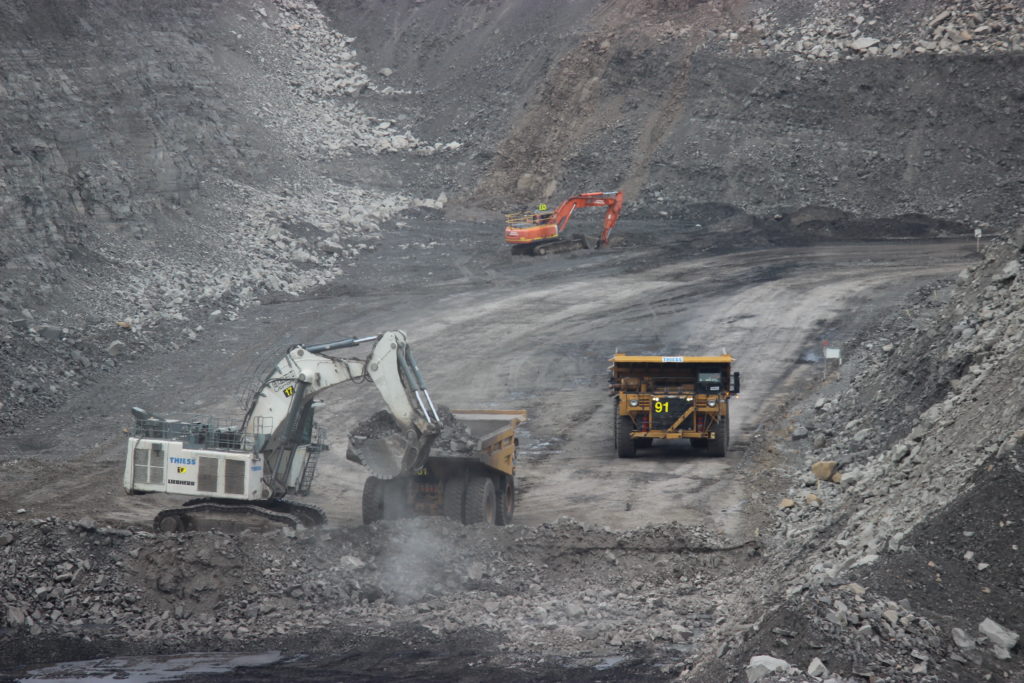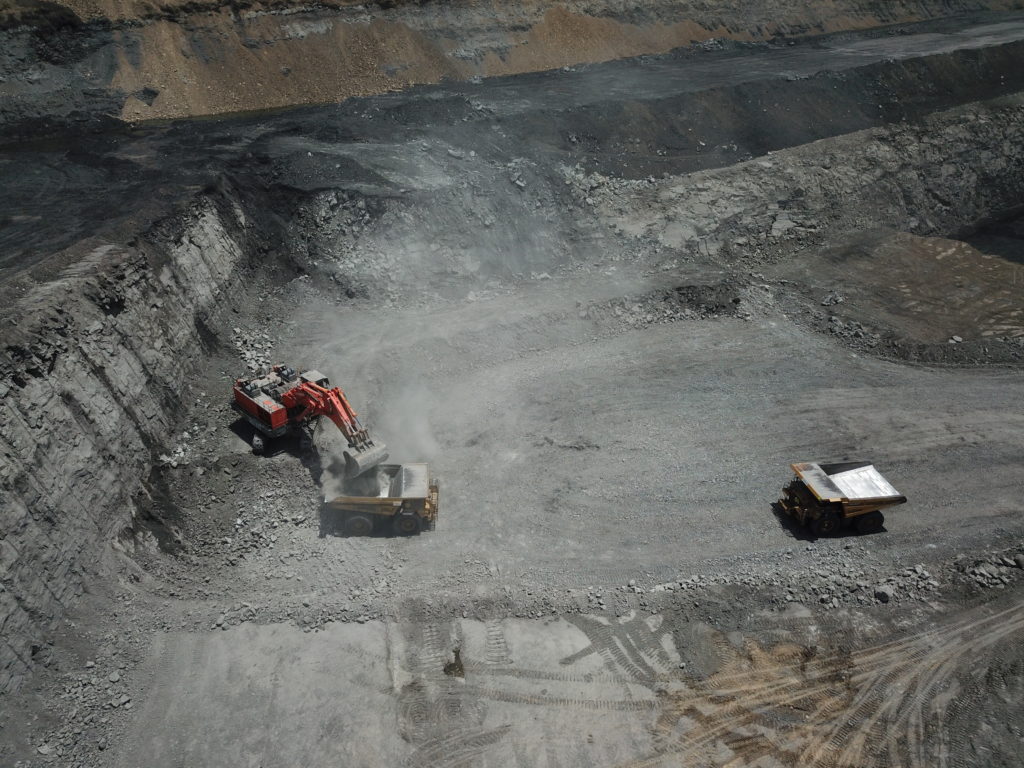What can be done to make water work in the suppression of coal dust? The imperative is to first consider the effects of coal dust control on the calorific value of coal in addition to dislodging the buoyancy of coal dust particles. No one also wants to achieve coal dust suppression at the expense of its use as a source of energy. Critical to the discussion is the hydrophobic nature of coal surfaces. Surface chemistry is the most important phenomenon to understand and comprehend. Characteristics of the coal dust suppressants that have been used, newer developments in coal dust suppression and their mechanisms of action will be discussed in the article. History is important to assess why initial dust suppressants did not achieve the expected results whilst understanding the efficacy of superior performing coal dust suppressants and their evolution over time.
Water water everywhere…
Traditionally, the water spray is the most commonly used coal dust suppressant as raising moisture content in coal dust is meant to agglomerate coal dust particles through the capillary force of water molecules. However, the drawbacks with water include short term effectiveness due to unpredictable rapid water evaporation rates in summer seasons that are dependent on atmospheric conditions. The rationale for using water was that wetting of coal adequately at the face, would minimize dust created during transport at the transfer points. Water has high surface tension and the same surface charge profile as coal surfaces, which is mainly hydrophobic. Although coal mineral matter is hydrophilic it comes as inferior to the hydrophobic coal macerals which render domination of hydrophobic sites over hydrophilic sites. The hydrophilicity of water can only achieve a reasonable but not consistent and long-long lasting which would result in the use of more water as opposed to minimizing water usage owing to possible interfacial chemistry changes to water. Principally the need was to make water work at the coal face which led to the development of products that could achieve amphiphilicity at the coal face.
The dust suppression evolution
The evolution of coal dust suppressants revolved around reducing the surface tension of water without loss of the wetting capabilities of water itself preferable at a small cost. In order to achieve that there was the need to harness surface chemistry of a product that when in aqueous solution, the concentration would be higher at the surface than it would be in the bulk of the liquid. The solution to making water work was answered through the application of surfactants. By definition, they are organic compounds consisting of a polar head group and a hydrophobic tail. Generally, the head groups can be hydrophilic, lipophobic or oleophobic whereas the tail groups can be hydrophobic, lipophilic and oleophilic. When added to water the surfactant can be used to increase the coal dust suppression to the water spray system. The hydrophilic head groups make the surfactants soluble in polar solvents such as water and they determine the main characteristics of the surfactants. On the contrary, the hydrophobic tails are usually made up of hydrophobic chains which render insolubility in polar solvents such as water. The discussion will further divide them based on hydrophilic group which will be described in the mechanism of action section.
Are environmental regulations, health and safety concerns or potential profit loss a concern right now?

Other methodologies
It would be biased to strictly focus on just the use of surfactants as such is a broad topic which requires a balanced approach. Other methods of making water work has been attempted and used. Magnetized water, atomized water sprays electrostatically charged fogs, high-pressure sprays and sprays that use foams or wetting agents have been utilized. The challenges faced in using these alternatives included excess water leading to belt slippage and reduction of conveyor cleaning systems, wet and sticky fines which possibly accumulated within chutes and around transfer points. Inherently water is not an effective binder hence coal dust particles tend to dislodge and become loose leading to their buoyancy and release back as inhalable and respirable coal dust. In fog spray applications, an ultra-fine mist of water agglomerates the very particles based on the principle that droplets of similar sizes as coal dust particles are more effectively combined in the process. In water spray systems, air currents produced blow away much of the coal dust cloud with coal dust suppression achieved through slowing the air movement within the loading zone.
The challenges to the alternative methods above included variations in dust concentration and particle size based on the nature of the coal mining operations. The basis of the fog spray, for instance, was solely focused on physical properties such as particle size which is not always effective given the coal dust particles do not necessarily become dislodge inequitable size distributions. The extent to which dust suppression was implemented was also dependent on the potential of coal dust being a health hazard, public nuisance, the existing regulations and emission rates. The undesirable effect of excess moisture content is poor wettability as a result of repeated use of water to achieve coal dust suppression can negatively alter materials performance with a reduction in its calorific value.
Surfactant technology
The mechanism of action for surfactants in coal dust control is entirely dependent on adsorption that occurs on the interface between the surface-active agent and the coal surface. The coal surface is primarily hydrophobic in nature with secondary hydrophilic sites hence the amphiphilicity of surfactants enables a dual mechanism through lowering the surface tension of water whilst converting the coal surface to hydrophilicity via adsorption onto the hydrophobic sites. The surfactant solution succumbs to physical changes as a result of the decrease in surface tension with increased concentration of surfactant until a point is reached where it remains relatively constant as the surfactant molecules form a unimolecular layer on the surface. Intricately, adsorption takes places after addition of surfactant into the water, the hydrophilic head groups of surfactants in the polar environment of the water whereas the hydrophobic tails interact with the hydrophobic coal surface. Dipole forces are responsible for hydrophobic interactions at the coal face which converts them hydrophobic sites into hydrophilic sites hence improving coal wetting performance.
The dust control revolution

So what separates the different products marketed for coal dust suppression? In particular, how can we manage rapidly generated, fast-moving dynamic dust? As we focus on practical solutions to coal dust suppression, Global Road Technology (GRT) offers the Australian made products GRT: ActivateUG (underground) and GRT: Activate which can make water work. The choice of coal dust suppressant should factor in effects on coal calorific values, the percentage used per ton and ability to super-activate water. The key-differentiating factor is SPEED. GRT: Activate works faster than any other technology on the market. Each application and mine differ – GRT solutions and delivery hardware are tailor-made to suit any coal dust suppression need to the satisfaction of the client.
Your feedback is important to us. If you enjoyed reading this Global Road Technology industry update and found it informative, please let us know by leaving a REVIEW.
REFERENCES
Chang, P., Zhao, Z., Xu, G., Ghosh, A., Huang, J., and Yang, T. 2020. Evaluation of the coal dust suppression efficiency of different surfactants: A factorial experiment. Colloids and Surfaces A. 595. 1-8.
Chen, J., Hu, X., Fang, Y., Jin, G., and Xia, Y. 2019. What dominates the interfacial properties of extended surfactants: Amphipathicity or surfactant shape? Journal of Colloid and Interface Science. 547. 190-198.
Hendriks, C.A.M., and Claus, H. 1963. Effect of Dust Suppression Measures on the Prevalence of Coal Workers Pneumoconiosis in the Dutch Coal Mines. Brit. J. Industr. Med. 20. 288-297.
Petavratzi, E., Kingman,S., and Lowndes, I. 2005. Particulates from mining operations: A review of sources, effects and regulations. Minerals Engineering. 18. 1183-1199.
Xu, G., Chen, Y., Eksteen, J., and Xu, J. 2018. Surfactant-aided coal dust suppression: A review of evaluation methods and influencing factors. Science of the Total Environment. 639. 1060-1076.
Troy Adams
Troy Adams is the Managing Director of Global Road Technology (GRT) Specialising in Engineered Solutions for Dust Suppression, Erosion Control, Soil Stabilisation and Water Management. A pioneering, socially conscious Australian entrepreneur, Troy Adams is passionate about health and safety and providing innovative solutions that are cost-effective to the mining industry, governments and infrastructure sectors. Troy is also a tech investor, director of companies like Crossware, Boost, Hakkasan, Novikov and more.

